Generation Z, a demographic cohort comprised of people born from the mid 1990s to the early 2000s, is the first generation to have no memory of life before cell phones, laptops and widespread use of the Internet. Currently, members of Generation Z are in high school and college, and institutions like Greenville Technical College in Greenville, SC are recruiting and training them, alongside Millennials in their 20s and 30s, to form an advanced manufacturing workforce.
The technical college’s Center for Manufacturing Innovation (CMI), which opened in the fall of 2016, offers courses in industrial automation, robotics, CNC machining, manufacturing management, metrology, quality management, process design and Lean Six Sigma, among others. Paid for by a $25 million bond issued by Greenville County, the 100,000-square foot facility includes a metrology lab, prototyping lab and additive manufacturing area.
Hands-on training, coupled with real-world experience working with local business, enables students to not only fill the skills gap left by retiring Baby Boomers, but also harness the power of automation to make manufacturing faster, cleaner and more precise than ever before.
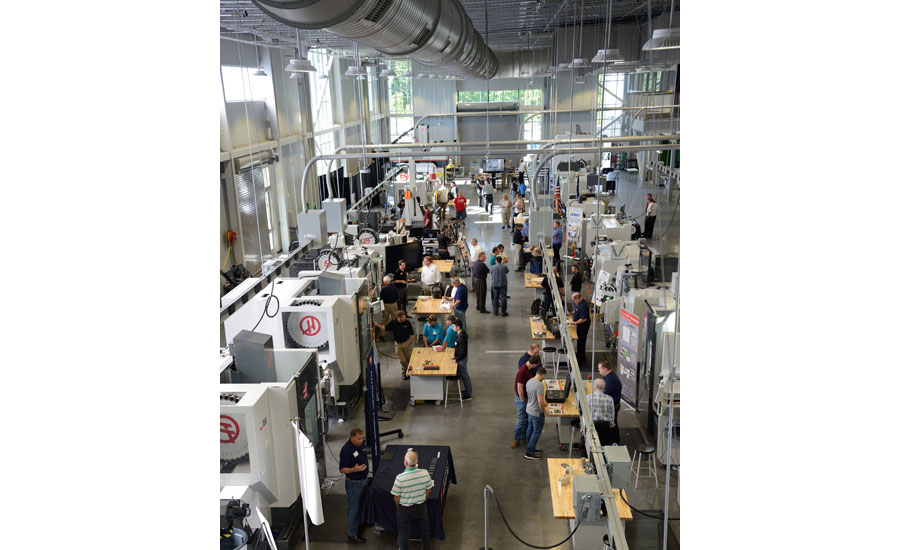
CMI’s main machining area. Source: Renishaw
Renishaw teams with CMI
In December 2017, Renishaw announced a collaboration with CMI to provide training and equipment for the next generation of engineers and machine operators. By learning to use the latest tools and technologies, like Renishaw’s automated probes and additive manufacturing (AM) system, students also get a leg-up in the job market, as top-tier suppliers in the aerospace, power generation and automotive industries seek highly-skilled, tech-savvy workers.
Says David Clayton, executive director of CMI: “The goal for us is to raise the academic bar for our graduates: to teach new skills, new technology and the importance of quality all the way through the production process.”
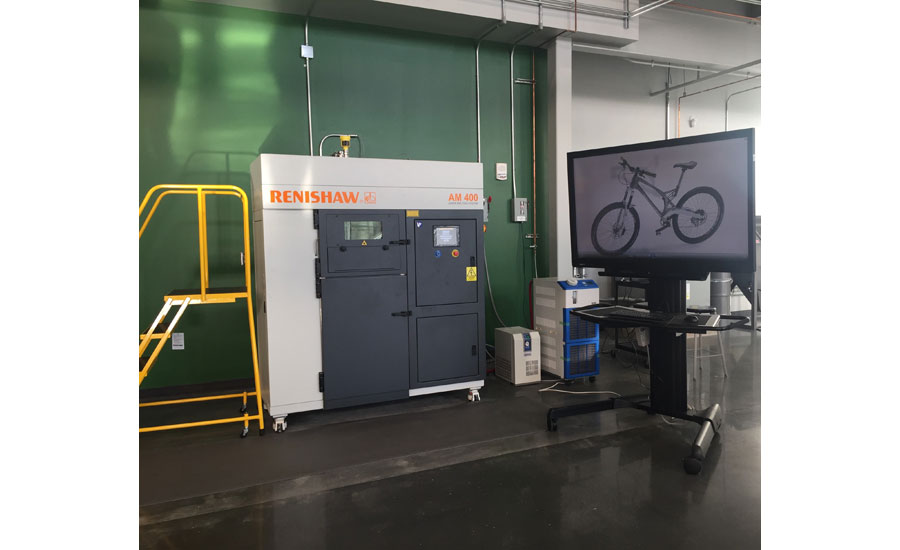
CMI’s additive manufacturing cell. Source: Renishaw
With metal cutting and AM, that process begins with predictive controls—applied just before metal cutting starts or lasers fire—that are fully programmable.
Therefore, while Millennial and Generation Z operators are doing less manual work than the Boomers before them, like taking measurements, making calculations and inputting offset changes, they still need to learn about automated setting and controls.
For instance, Renishaw offers a suite of automated, predictive controls for CMI students to master: from workpiece inspection probes that automatically measure component position and alignment, to tool setting probes that automatically set cutting tools on the machine tool, to software that enables tool and part setting to be seamlessly integrated with metal cutting.
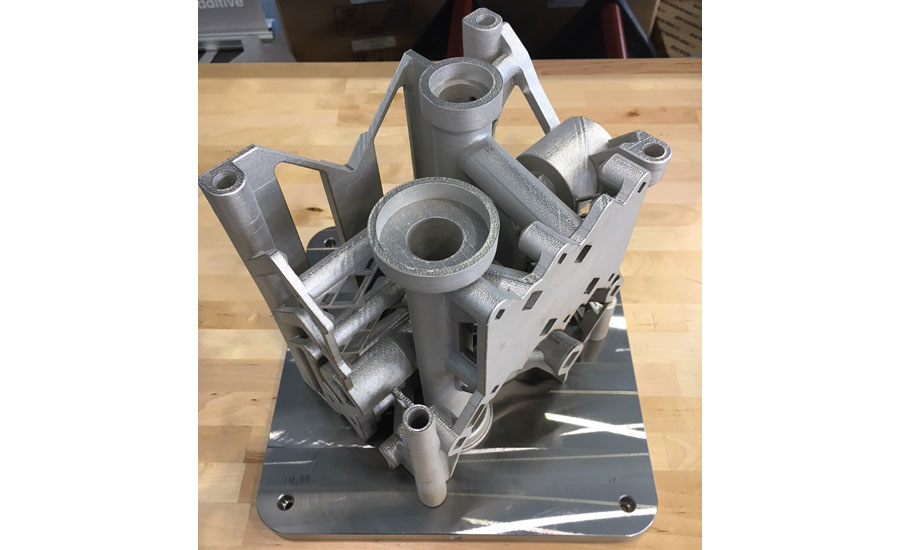
An additively manufactured part, created at CMI via Renishaw’s AM 400. Source: Renishaw
A student’s guide to setting up Renishaw’s AM400
According to Scotty Nicholson, machine tool instructor at CMI, each of his students receives a “Machine Clean” checklist and process sheet to fill out before firing the first laser on the Renishaw AM400 additive manufacturing system that is housed at the facility.
This detailed checklist includes:
- Isolating and removing the SafeChange filter
- Cleaning the chamber
- Fitting the silicon wiper blade
- Inputting new substrate thickness
- Cleaning the lens
- Setting the wiper height
- Checking argon levels
- Performing a heat soak if needed
- Confirming user setting
- Ensuring there is enough metal powder for the selected build
- Checking that the metal powder overflow bottles are empty
- Fitting a new, clean SafeChange filter
Despite the productivity, flexibility and ease of material changeover inherent in the machine, a human failing to ensure that proper controls are set will cause the machine to fail. As CMI students learn firsthand, a machine operator still has to make several confirmations to ensure that a smooth and accurate production process will carry out: that the correct build file is loaded, that the system has been loaded with the correct amount of metal powder, that the operating temperature is correct and so on.
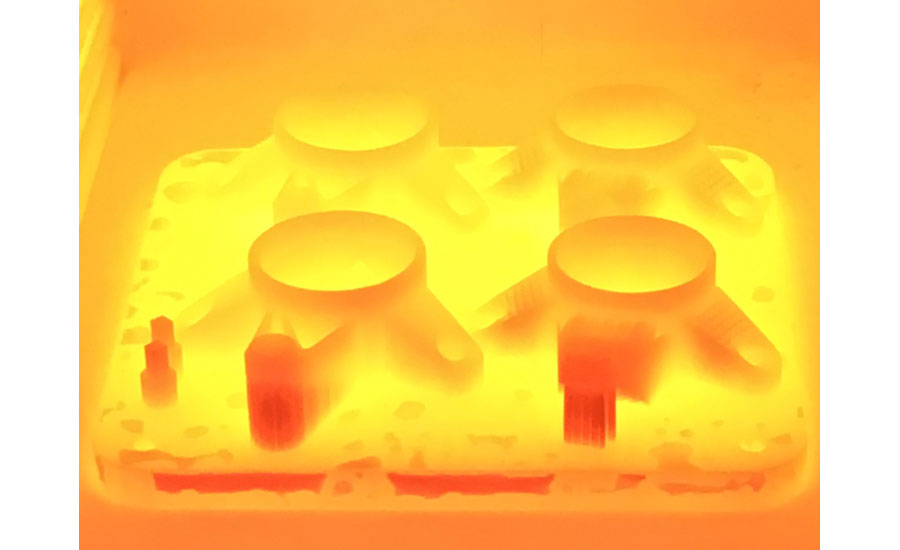
An additively manufactured part being heat treated. Source: Renishaw
“There is a lot of preparation that goes into metal AM build,” says Bill Cox, one of the program liaisons from Renishaw who works with CMI on optimizing the latest technologies. Part of it is safety related, he continues, but that also extends to working with machine tools.
“Do they have their safety glasses on? Do they have their safety shoes on? Are they wearing the proper gloves? The basics,” Cox says. “And then you go forward into the proper use of those machine tools: proper use of the fixturing that is holding the part, proper use of probing for set-up and for the probing that is used for monitoring the process.”
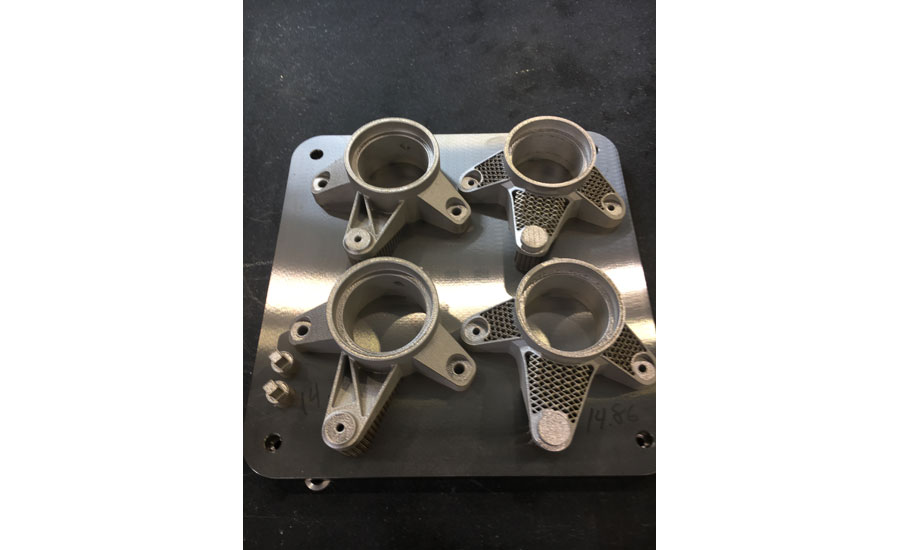
A finished additive build part. Source: Renishaw
The benefits of automated probing for CNC machines
Automated setting with probes can be up to 10 times quicker than manual methods, which is why CMI students learn how to use Renishaw workpiece probes for component and tool setting, as well as for in-cycle tool breakage detection and inspection. They also learn how to use Renishaw’s Inspection+ and Productivity+ software for automated updates of tool and work offsets.
Renishaw’s on-machine probes allow automated operation with multiple benefits, such as reduced machine downtime and reduced scrap. Errors that often occur with manual tool setting also are virtually eliminated through automatic tool offset calculation and correction, which results in much faster and more accurate tool length and diameter measurement.
But according to Cox, the first step for students is not learning how to set the probe, but understanding the probe’s relationship to the entire machine and to the full production process.
“You need to understand your machine tool before you make the first cut,” Cox says, “and understand how to cut cycle time in relation to the part setup.”
Knowing how to use probes and inspection software is important, of course; but bosses at big companies like GE or Bosch, Cox notes, also want employees who are strategic, who know how to save a lot of cycle time and a lot of cost on scrap.
Automation as the great equalizer
Part of his job in working with CMI, Cox says, is to keep the curve going not just upward but forward, and empowering students to think beyond the basics of probe, part and tool setting.
As a lifelong Carolinian, Cox has seen South Carolina transition from a textile-based economy that “went to hell in a hand basket” in the late 1970s to a growing manufacturing economy that, for the past 20 years, has been building a technical college network and workforce development programs that feed into local businesses and top-tier suppliers to the region, like BMW.
He also thinks that automation hasn’t made machine operators’ jobs easier, per se, just different.
“There used to be a population of tool and die makers who could make a manual machine, and that had archived knowledge of years and years of experience” Cox says. “And while our technology has grown—CNC has become an active part of manufacturing now—the challenges are different because the technology is far more advanced.”
With manual machining, it was more about talent, Cox says. Now, it’s about learning skills and fully understanding the technology, he says, and learning how to properly take care of the equipment.
Nicholson agrees. “Every company that I have worked with that hires my students have and use Renishaw products in their production process,” he says. In fact, a recent hire at Renishaw, CMM engineer Rich Tuttle, received his two-year degree from Greenville Technical College.
Cox says that moving away from traditional hand tooling is a natural progression, and that many of CMI’s students are Gen-Xers and Boomers who are eager to learn how to automate processes they’d been originally taught to perform manually.
But no matter their age or level of technological aptitude, today’s manufacturing students need to learn a new skill set—and well—in order to succeed.
“We don’t have workforce now that has been working on a car since they were eight years old,” Cox says. “So we’re trying to train people from the beginning, very quickly and in stages, with the advanced technology providing footprints of experience…but they still have to understand advanced CNC controls and programming.”




